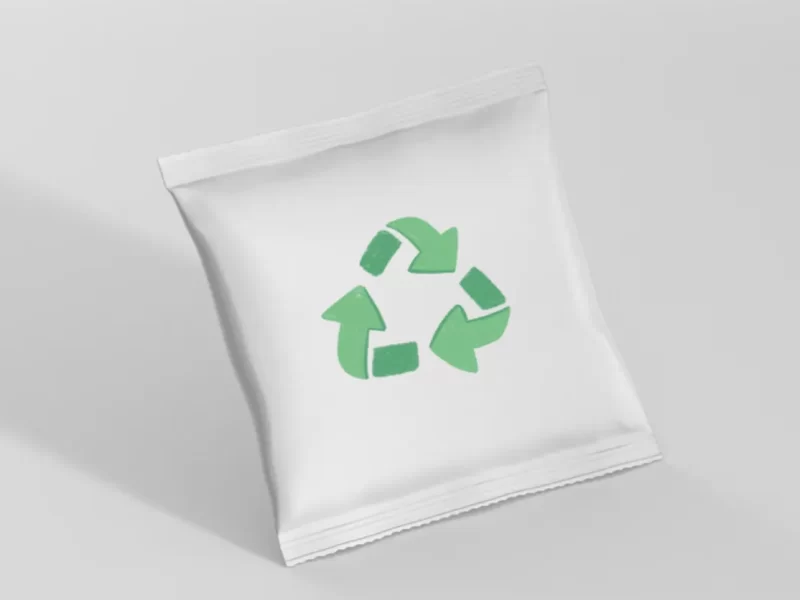
As a kind of leisure food, potato chips are very popular among people. Therefore, modern potato chip bags not only protect the product and facilitate the role of transportation, but their emballage alimentaire also bears the important responsibility of marketing strategy. At the same time, with the aggravation of the global environmental crisis and the increasing awareness of sustainable development, traditional packaging can no longer meet the needs of modern society, product packaging must be in the protection of the product at the same time, but also shoulder the responsibility of green environmental protection. Therefore, it is particularly important to develop innovative technologies that can protect products and reduce the burden on the environment.
Protective Functions of Potato Chip Bags
.webp)
.webp)
- Protective function: moisture-proof, oxidation-proof, and pressure-proof are the basic requirements for potato chip bags. To achieve this effect, high-barrier composite packaging materials are usually chosen, such as (BOPP/AL/PE) aluminum foil composite film or (PET/MPET) aluminum-containing materials, which can effectively prevent contaminants, such as water vapor and oxygen, from entering the food bag to avoid product deterioration.
- Easy-open: To enhance user experience, many ready-to-eat food packages are designed with easy-tear or zipper closure, making it convenient for consumers to enjoy the delicious flavor anytime and anywhere without restriction.
- Visual appeal: the type, color, pattern and text design of potato chip bags play a role in attracting consumers’ attention. How to use different colors to the psychological impact of the product is particularly important in the design. For example, spicy and barbecue-flavored products usually use warm colors such as red and orange.
- Branding: Unique brand identity, infectious slogans, and complete product information are very important in building brand image and enhancing customer trust.
- Information display: According to the relevant laws and regulations in China, food packaging bags must display necessary information such as nutritional composition table, allergen labeling, ingredient list, product origin, production date, product expiration date, and so on.
Sustainable Packaging: Addressing Environmental Challenges
Traditional potato chip bags have been used for a long time in the past due to their cost-effectiveness. However, traditional flexible packaging is not biodegradable, making it difficult to avoid the generation of large amounts of plastic waste, which in turn affects the natural ecosystem. Plastic waste occupies a large amount of landfill space and eventually decomposes into microplastics, affecting our soil and water sources and jeopardizing the health of human beings, plants, and animals.
In the face of this situation, various industries are looking for solutions, and the packaging industry is no exception, actively exploring a variety of des solutions respectueuses de l'environnement to minimize the impact on the environment. The following are some of the main directions of exploration:
Degradable plastics: Degradable plastics are plastics that degrade to carbon dioxide, water, and biomass through microbial action in a specific environment. Such plastics are divided into two categories: fully degradable plastics and partially degradable plastics.
- Fully degradable plastics: such as polylactic acid (PLA), polyhydroxy fatty acid esters (PHA), etc. These materials can be completely degraded under composting conditions.
- Partially degradable plastics: By adding degradable additives to traditional plastics, they are made to degrade more easily under specific conditions.
Paper-based materials: Paper itself has good degradability, but when used for food packaging, single-layer paper has poor barrier properties, so it usually needs to be laminated with aluminum foil or film to improve barrier properties and enhance oil and water resistance.
Bio-based materials: this material is made of natural polymer materials, such as corn starch plastic, chitosan, etc., which is natural and environmentally friendly, but also has good physical properties, in line with the requirements of green environmental protection.
Multi-functional composite materials: combining the advantages of multiple materials and recombining them to achieve the effect of 1+1>2, realizing the effective unification of high performance and sustainable development.
The Future of Potato Chip Bags: Innovation and Sustainability
Single material packaging: reduces processing difficulty and facilitates sorting and recycling.
Re-sealable design: encourages multiple uses, reduces packaging waste, and effectively minimizes content waste.
Food-grade packaging: Data shows that some raw materials have begun to try to make packaging in edible form to eliminate waste generation.
Circular economy model: To form a closed-loop system for resource utilization, consumers are encouraged to participate in packaging recycling programs.
Envisioning the Future, Continuous Innovation
With the development of technological innovation and digital transformation in materials science, potato chip bags and other food packaging will face more changes, for example:
Nanotechnology: developing new packaging materials that are thinner and stronger.
3D printing: brands can personalize their packaging to suit individual preferences.
Blockchain technology: for traceability, tracking all aspects of the production process from raw materials, increasing transparency in the supply chain, and enhancing consumer confidence in purchasing.
Conclusion
The design and production of potato chip bags is a complex and challenging field that requires us to achieve sustainability while pursuing low cost. Through technological innovation and conceptual updating, we can create aesthetic, practical, and environmentally friendly packaging solutions and work together to build a harmonious and better future.
